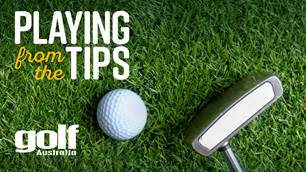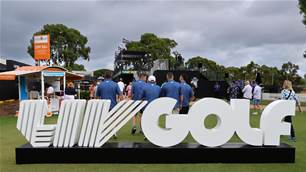Swimming training became much more than focusing on black-tile lines after Forbes Carlile scienced it up.
Australia has always punched well above its weight in many arenas, with great success; sucker-punched the world with some grand performers, scientists, inventors, writers and artists. The reasons have generally been the same across these disciplines: ingenuity, indomitable spirit, nerve, sheer cheek.
We’ve produced some of sport’s finest, from enduring performers who demonstrated, over time, their right to keep company with the select few, to the magnificent thieves who pinched gold medals and world championships from under the noses of the world’s best before slipping away.
These knockout blows were often delivered courtesy of great, sometimes eccentric, tutors and students in their respective fields – extraordinary men and women like Percy Cerutty, Harry Hopman, Joyce Brown, Alan Jones and Forbes Carlile. Anyone who remembers Shane Gould’s amazing feats in Munich in 1972 associates them with Carlile. Carlile hung a plaque in his team’s rooms that said, “Our aim is not to produce champions, but to create an environment in which champions are inevitable.” That environment was unique, as was the irascible, disorderly, outspoken, innovative and determined man who presided over it.Carlile was decades ahead of his time, a curious man with a scientific bent who was prepared to back his theories by testing them on himself.
Although he was NSW backstroke champion in 1942, and gained blues at Sydney University in rugby and swimming, it was as a sporting scholar who imported scientific theory into swimming, and, indirectly, to all sport, that Carlile will be remembered.As a student he was involved with Professor Frank Cotton in the research and development of scientific techniques and their application to sporting performance. Under Cotton, Carlile obtained his Masters working in what’s now considered Australia’s first sports science laboratory and applied his empirical approach to exercise physiology to swimming.
He was Australia’s coach for the 1948 Olympics. In 1950 he entered his first marathon to study his own physiological reactions to a sport he’d never competed in.It was Carlile, along with Bill Berge Phillips, who used world record-holder John Marshall to prise open the door to a new era of swimming. A company of champions emerged in time for Melbourne, 1956: Henricks, Devitt, Rose, Konrads, Fraser and Crapp.He was national swimming coach when he decided to become an Olympic competitor – in the modern pentathlon! Carlile set out to “master” pentathlon’s five disciplines: athletics (3000m run), swimming (200m freestyle), shooting (pistol), equestrian (show jumping) and fencing. He had trouble obtaining a pistol license and had no one to compete against, yet his system of monitoring his own performance, with the help of experts in each discipline, was enough. At 30, he was selected for the 1952 Helsinki Games.

Shane Gould, a Carlile golden girl. Image: Getty images
After training a month with the American team at West Point, Carlile finished 25th in a field of 51.At the same Games, breaststroker John Davies won gold thanks to Carlile and Cotton, who enjoined him to swim identical lap times throughout, rather than varying his speed – a strategy requiring iron nerve. Davies outswam his over-eager competitors.
Carlile was head coach at those breakthrough Melbourne Games, but by 1964 (Tokyo) he was coaching the Dutch team. His outspoken ways saw him forever at odds with Australia’s swimming establishment. But at home he, along with his wife, the inspirational Ursula, and their assistant Tom Green, continued to produce such champions as Gould, Karen Moras, Gail Neall, Davies, Terry Gathercole and Ian O’Brien.
In 1963 his pioneering thinker’s book, Forbes Carlile On Swimming, was the first to connect testing and measurement with performance. In it, he coined the term and introduced the concept of “tapering” – now part of sport’s lexicon, used to describe the easing of training intensity close to a meet. He was the first to use the pace clock so swimmers could time their own training efforts; the first to introduce log books, monitor heart rates and use circular swimming – using both lane sides so swimmers could train simultaneously.
He introduced stress training, interval training, T-wave studies of the ventricles, even-paced swimming and the use of two-beat kicks for distance events. He also adapted work goggles to the pool and was responsible for their introduction into competition.His aim to keep the sport clean was partly responsible for the formation of the World Anti-Doping Agency.
Carlile’s “prickly” nature led him to miss out on many Olympic coaching jobs, but his nemesis, Swimming Australia, finally recognised him two years ago with life membership. He wryly dismisses the accolade’s belatedness, quoting Art Buchwald: “If you fight the establishment long and hard enough, they eventually make you one of them.” For a man of his achievements, “too little, too late” doesn’t apply.
Related Articles

Playing From The Tips Ep.100: Webex Sydney, Honda LPGA, Mexico & Kenyan Opens

Rise of LIV Adelaide and the positive impact on a city













